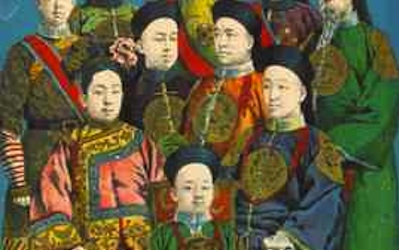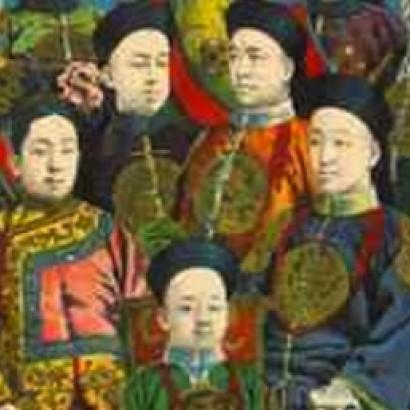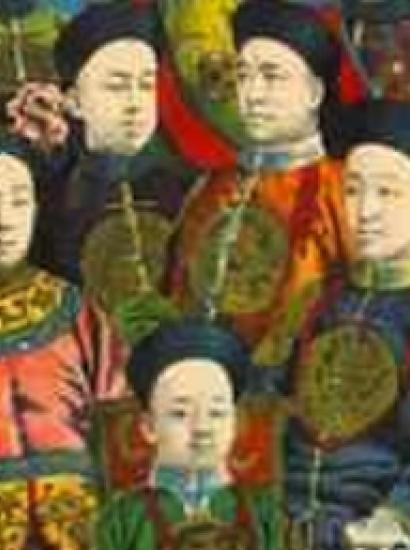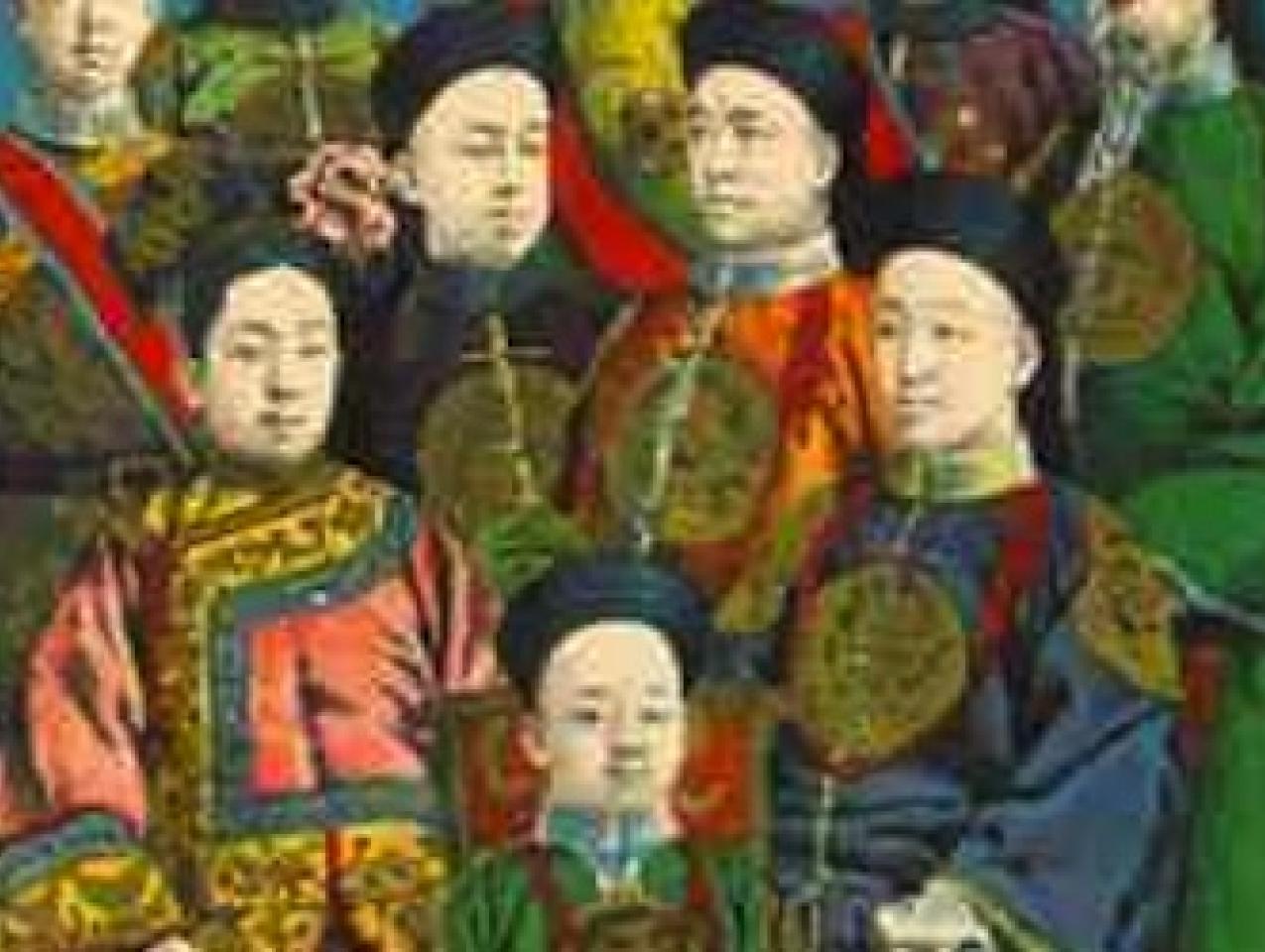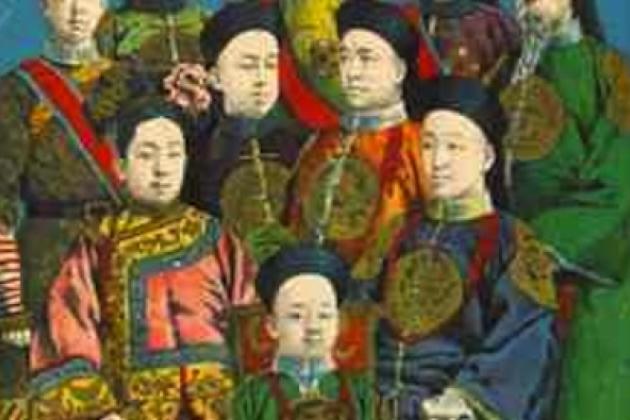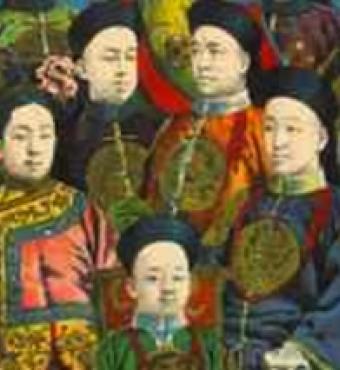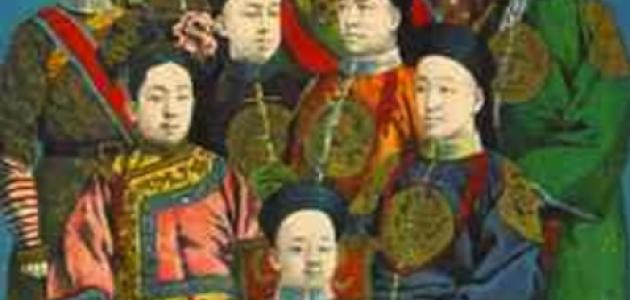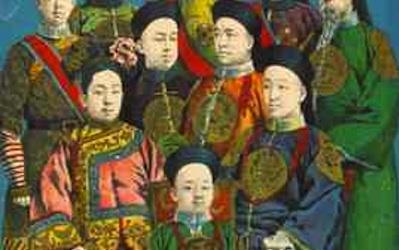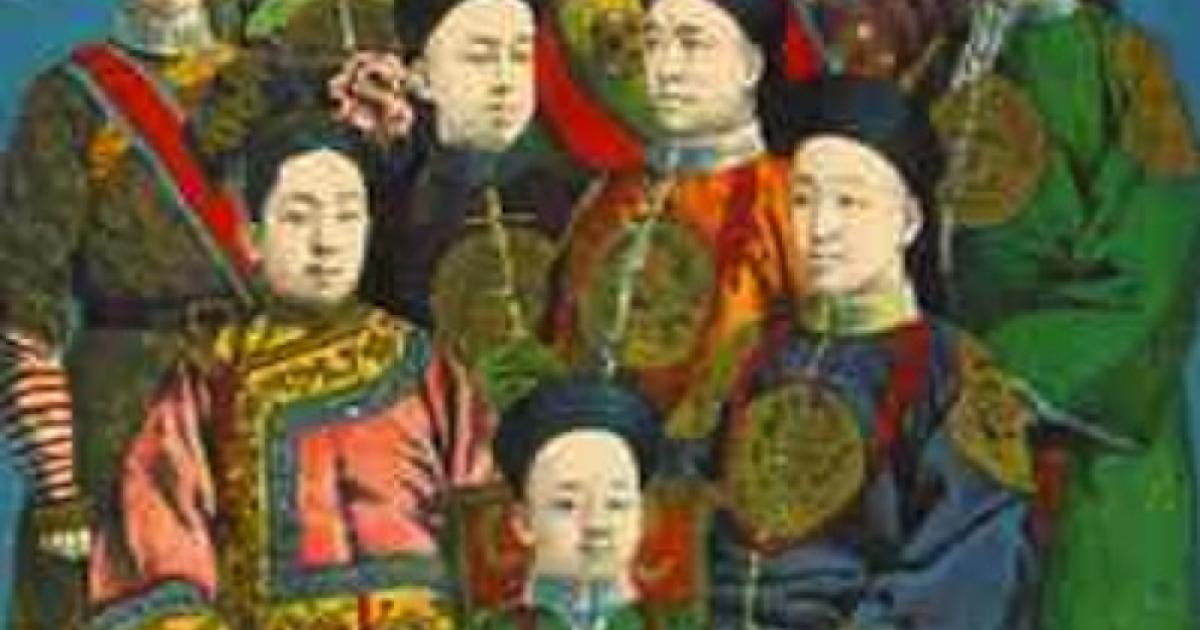- Law & Policy
- Civil Rights & Race
- History
- International Affairs
- US Foreign Policy
Ever since Thucydides’ “manual for statecraft” portrayed the starkly divergent strategic cultures of Athens and Sparta, the need to comprehend one’s own and other nations’ identities has been indispensible. But in recent decades, discussions of national character have been scorned as politically incorrect and non-quantifiable. Yet a national identity crisis can be seen in one place after another, like in the Arab world, the European Union, and Russia. Of all the identity problems today, China’s is the most severe. The Bo Xilai scandal that has riled the leadership succession, the Chen Guangcheng human rights standoff, and tense situations from Xinjiang to Tibet to the South China Sea all contain manifestations of this underlying phenomenon.
China seems always to have been fully formed. The Chinese tell the world, and scholars in the West reinforce the idea, that the People’s Republic today is serene, self-assured, the product of thousands of years of Confucian calm and virtue, the practitioner of a patient, nuanced, subtle statecraft designed to succeed without confrontation or warfare.
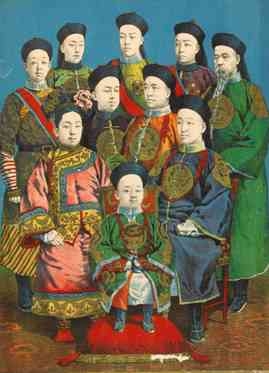
Portrait of the Qing Imperial Family in 1909 (Poster collection, Hoover Institution Archives).
Yet China’s history from remotest antiquity to modern times has been as turbulent, unpredictable, and violent as any other major civilization on earth. And through the most recent centuries, the question of “Chineseness” itself has come to the fore. The Beijing regime, led by the Communist Party, seems preoccupied with the matter of Chinese identity as it launches one campaign after another to try to explain to the Chinese people who they are and what China’s meaning to the world should be.
The incongruity between the eternal cultural image and its currently contested reality suggests that modern China’s long “search for a political form” has not yet ended, and the status of traditional Chinese thought and practice remains uncertain.
The Manchu military conquest of China in 1644, which would become the Qing dynasty, has been portrayed as an example of China’s supposedly unique power to coopt, absorb, and soon incorporate every foreign influence, making invading elements compatible with, or even contributors to, Confucianism.
But the Manchu court was regarded by the Chinese as “interlopers from beyond the pale of civilization.” The shock to the Chinese psyche was deep and lasting and dramatically displayed by the Manchu edict that all Chinese men must shave their foreheads and braid their remaining hair into a Manchu tribal-like queue, a humiliating act of degradation, for long, carefully-attended hair was part of the Confucian scholar-official’s dignified bearing. Throughout the Qing dynasty’s long rule, the image of “the pigtailed Chinaman” became the cartoonist’s badge of Chinese identity to the world.
Manchu supremacy marshaled China’s resources into ambitious military campaigns that brought all of Buddhist Mongolia and Muslim Xinjiang into their empire and would come to dominate Tibet, thus establishing Qing imperial borders far beyond traditional Chinese culture and history. Today’s People’s Republic of China, as a result, is an empire compelled to declare itself a state, and to seek ways to assimilate huge areas with non-Han Chinese populations.
China and the International System
Nineteenth century Qing China felt the heavy impact of two additional foreign-origin assaults. China’s mercantilist economic system was disrupted by Britain’s use of the opium trade to siphon silver out of Qing coffers and carry the un-Chinese thoughts of Adam Smith to Asia. China’s status as the center of a system of world order and recipient of “tribute” from lesser nations was challenged by the British and other outside powers’ military-diplomatic forays aimed at forcing the Qing court to accept resident foreign embassies under the Westphalian doctrine of “the equality of states”—which could not have been further from China’s sense of world order.
As the British-led “opening” had its way in Peking and the “treaty ports” on the coast, yet another form of alien power arose in China. Just at the time when “Chineseness” seemed to be absorbing and transcending Manchu Qing rule, the foreign faith of Christianity was adopted and distorted by an ambitious youth who failed to pass the Confucian examination, which would have placed him among China’s official elite. He transformed the message of missionary tracts into an uprising to drive foreign demons from China and establish a Taiping Tien Kuo—Heavenly Kingdom of Great Peace. The foreign demons were not the British or other westerners, but China’s Manchu rulers. A foreign faith thus would be employed in a war to rid the land of foreign rule and regain China for the Chinese.
The Taiping Rebellion of 1851–1865 was the most violent upheaval, worldwide, of the nineteenth century, causing an estimated twenty to thirty million deaths as its armies ravaged south and east-central China, burning the Confucian classics as it went, all in the name of Christianity. A combination of Imperial Qing soldiery, Shanghai-based Western irregulars, and internal Taiping rivalries brought an end to the Heavenly Kingdom.
Of all the world’s imperial powers, the Qing court most bitterly struggled against efforts to integrate China into the international state system. But after British Lord Elgin invaded the capital, and burned the Summer Palace, an incipient foreign ministry was set up in Peking in grudging recognition that China had no choice but to accept and participate in the system of state-to-state diplomacy then being imposed or adopted around the world.
The Boxer Rebellion of 1900, starting as a violent protest against Christian missionaries, led to the storming of the new foreign Legation Quarter of Peking. Manchu imperial rule was ending. The Nationalist Revolution came in 1911, inaugurating the Republic of China, and the first president of the Republic, Sun Yat-sen, went to the Ming Tombs to declare that foreign Qing rulers had been overthrown; China at last was again under Chinese rule.
Confucianism vs. Mao
In 2011, the Hoover Institution of Stanford University mounted an exhibition to mark the centenary of the Republic of China. There on display were the photographs, documents, personalities and cultural artifacts of a China once known to the world as a major presence within—and desirous of being so—the established international state system. The vibrancy of Shanghai, the diplomacy of Wellington Koo, the “Three People’s Principles” of a Chinese-style democracy, the celebrity of “Generalissimo” and Madame Chiang Kai-shek—all these conveyed a China both authentically in line with its traditional civilization, yet proudly comfortable in and with the outer world, symbolized when Chiang Kai-shek joined FDR and Churchill at the 1943 Cairo Conference and took his seat as one of the “Big Five” of the United Nations Security Council in 1945.
But China as a Republic had been weakening for years, fouled by official corruption, by warlordism, and crushed between the forces of Imperial Japan and Mao’s Chinese Communist guerillas.
The Chinese Civil War of 1946–1949 brought defeat to the Republic of China. The Nationalist army and government left the mainland for Taiwan as Mao’s fighters streamed victoriously into Beijing and proceeded to impose the wholly foreign ideological movement of Marxist Communism and its rejection of traditional Chinese culture. Observers in 1949 were astonished to see Maoist workers installing a giant portrait of a heavily bearded German Jew at Tiananmen, the symbol of Chinese civilization. The special attraction of Marxism–Leninism was its criticism of the capitalist West from a Western point of view.
During Maoist rule, Confucius and his teachings on statecraft and virtue were used or abused by the regime as political expediency required. In August 1973, a major anti-Confucius campaign to “mobilize the masses to criticize Confucius” began, with Mao’s wife Jiang Qing condemning the sage as “a murderer.” Not long after, when I was on the State Department team negotiating the first PRC-U.S. cultural exchange—an exhibition of recently excavated Chinese archeological artifacts then moving toward Washington’s National Gallery of Art—one of the works was suddenly withdrawn, a thousand-year old fragment of a manuscript copy of Confucius’s Analects.
Why was Confucius suddenly so viciously denounced? It was a “Battle of the Books,” a deadly contest for control of China’s intellectual history. Confucius had lavishly praised the moral values of early China to establish the principle that all statecraft depends upon the virtue of the ruler. Mao, however, through his book-burning and scholar-persecuting Cultural Revolution was being compared with Emperor Qin Shi Huang Di who had burned Confucian texts and buried Confucian scholars alive as he brutally unified China in 221 B.C. Confucianists had denounced Qin; Mao was Qin redux; so Confucius had to be demonized. If the achievement of the Qin emperor and Mao were to be held up as models for modern China, Confucius had to be utterly discredited.
With Deng Xiaoping rehabilitated and rising in power—he had been denounced in the Cultural Revolution as a “secret Confucianist”— Confucius too began to be rehabilitated as an antidote to “spiritual pollution” from the West and as a worthy source of “Asian values,” a euphemism for acquiescence in hierarchy. Whether these campaigns were for or against Confucius, none truly focused on Confucius’ early teachings; each arose in the context of an acute national identity crisis in an attempt to shape a compliant Chinese identity upon which to base China’s age-old claims to a superior centrality in the world.
China’s long modern identity crisis can be tracked by the names given to the country. China until 1911 was known as the Great Qing (Da Qing) for the Manchu court. With the 1911 revolution, it became the Chinese Republic (Zhonghua Minguo), a name incorporating the old term for the state, “central” (Zhong) and “flowery” (hua) with a new term for republic, (Minguo, or “People’s Country”). With the Communist victory, it became the People’s Republic of China (Zhonghua Renmin Gongheguo). As Canadian scholar Diana Lary has pointed out, “None of the successive official names for the state uses the word “China” (Zhongguo), the name by which Chinese call their country.”
The Haunted Ghost of China’s Past
More than a politicized struggle about abstract and antique texts, Chinese identity was at stake in works on and about the land itself. John Hersey’s 1956 novel A Single Pebble, a minor classic set on the Yangtze in the 1920s, opens on a prophetic note with a young American engineer sent by his firm to study the river the Chinese called, “the Great,” to see whether “a vast power project in the river’s famous gorges” was feasible. Moving up the Yangtze, the engineer slowly understands that the river, the people that work it, and the boats they build to sail and agonizingly pull along it are all a single living entity, enveloped by the legends, songs, poetry, and learning of all China—but the Chinese learn more from the river.
“The river is a school”, Su-ling said, “The greatest scholars of Peking come to learn from the river.”
The engineer took it all lightly, and continued to draft his proposals for the best sites for damming the waters.
If the lonely sound of a railroad train whistle haunts American literature, the soul of Chinese literature was pierced by the cry of the gibbon in the Yangtze Gorges. No more. It would take three-quarters of a century after A Single Pebble’s tale for the People’s Republic to complete the gigantic Three Gorges Dam, displacing a million and a half people and inundating over a thousand archeological sites. The reduction of silt formerly carried by the rivers to its mouth has caused concern that the sedimentary foundation of Shanghai could deteriorate. The Beijing government continues to warn of “urgent problems” with the dam involving pressing geological, ecological, human, and engineering challenges. The psychological effect of the loss of the Yangtse as a symbol has a continuing impact on China’s national identity predicament.
China’s other culturally significant river, the Yellow River, was the focus of a national debate about China Central Television’s 1988 so-called documentary “River Elegy,” which implied that the conventional portrayal of China as a great civilization of enduring value was a perverse falsehood. The Yellow River of the title was not a worthy symbol of ancient Chinese culture, but clogged with mud, a metaphor for the Confucianism that had suffocated Chinese life for centuries. Other famed symbols of China were equally odious, suppressing the true spirit and humane values of the Chinese people: the Great Wall stood for inwardness while the dragon represented oppressive governance. Instead of the yellow mud of the river, China needed to look outward to the blue waters of the world’s oceans. “River Elegy” underlined the absence of national consensus on the core of national identity and called for something new.
Next came the deadly confrontation between students and the People’s Liberation Army in Tiananmen Square. In the aftermath, the Communist Party denounced “River Elegy”; some of those involved in the production were arrested and others took refuge abroad. The Party was faced anew with the task of redefining the meaning of Chinese history and the essence of what it means to be Chinese today. The Party leadership appears to regard this as a first order challenge, devoting major attention and resources to the task. An underlying cause of the Bo Xilai case in the first months of 2012 was his creation of the “Red Song” campaign—an attempt to fill in the blank space between Communism and Capitalism in today’s PRC, and a transgression of the Party’s monopoly over such campaigns.
Beyond the symbolic fate of the Yangtze and Yellow Rivers is the matter of what has been done to Beijing. In the words of Ian Johnston, writing in The New York Review of Books, “The entire city—all twenty-four square miles of it, from its layout based on geomancy and mythology to its tens of thousands of tree-shaded courtyard homes—was China’s traditional belief system incarnate.”
Under Mao, it all had to go. When the Maoists took command of Beijing, Tiananmen was re-configured so that nothing would represent anything of importance in history prior to October 1, 1949; as with the French Revolution, everything, mental and material, had to declare that the world had begun anew.
But China had to begin all over again, yet again, when Deng Xiaoping succeeded Mao and began to transform the country by opening the gates to a voracious form of capitalism—yet another foreign force to be faced by the Chinese people. The PRC leadership has chosen a national cultural identity course that attempts to put all major factors, past and present, no matter how disparate they may be, into one bundle, and to declare them to be comprehensively, coherently Chinese no matter what. Communism is capitalism; capitalism is Communism. The result is what Mao Zhedong would call a fatal “antagonistic contradiction.”
Across the years there has been a common theme, as declared during the student uprising of May 4, 1919 that
extremely contradictory antiphonal themes of national salvation and modernization have taken turns over the past century in writing China’s abnormally shaped history.
As noted in a 2011 “special report” of The Economist magazine, this continues to be an ideological battle between “universalists” of the May 14 movement and “River Elegy” and the “exceptionalists”—those determined to further entrench China’s authoritarianism. “For now, the second group has the upper hand,” the report read.
Thesis-Antithesis-Synthesis?
All of this may be understood in an Hegelian sense of thesis-antithesis-synthesis.
The thesis is China’s unassailably great civilizational past. The antithesis is China’s succumbing to foreign powers and ideas across the Qing-Taiping-Republic-Communist-Capitalist sequence. The synthesis, which the CCP hopes to implement, raises the question over whether a synthesis can be found by merging thesis and antithesis, or must there be a truly new and transformative outcome? The CCP’s answer lies in the former: China is to be Confucian, but not really so; and China is to be Communist, but not really so. The outcome is vexed in every dimension.
These disparate factors require an extensive and ongoing intellectual, political, and propagandistic effort to bind them into a single believable message. The paradoxes could be seen by placing a full page paid advertisement of the PRC in the Wall Street Journal promoting the world-wide establishment of Confucius Institutes and classrooms “committed to providing Chinese language and cultural teaching resources and services worldwide” side-by-side with a report by the Party School of the Central Committee of the CCP on “how Marxism has become an integral part of modern China’s cultural system. Marxism has changed China’s traditional language, changed the Chinese people’s philosophical way of thinking, and led the formation…of China’s popular culture.”
The aim is “to promote Marxism in China and… speed up the spread of China’s modern culture around the whole world, which includes the ‘the socialist core value system’ and ‘the socialist market economic theory.’” The odd couple of Communism and Capitalism can only be tolerated by the Chinese people as anything other than an insult to their intelligence for so long as the current leadership delivers spectacular prosperity, a likelihood that has dimmed recently.
Collective memory is indispensable for a democracy if it is to avoid chaotic incomprehension. Only democracy, through its processes, has the legitimacy required to give its collective memory due credit. No undemocratic regime—like the People’s Republic of China—can command the process of selecting its country’s collective memory validly or for long. The immediate past concocted by the CCP is revolutionary, leaving no freedom for Chinese to re-evaluate their situation; and the distant past which the Party calls Confucian is not “a useable past” beyond its usefulness to the Party itself.
There is no synthesis here, despite the Party’s claim to represent it. When a true Chinese identity finally emerges which can be both Chinese and integrated into the world, it will look much like its prototype: the Republic of China with all its faults and failings from 1911 to 1949 and then, in its best developed form, on Taiwan.







